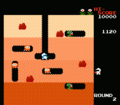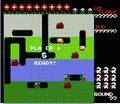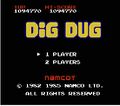Apple II[edit]
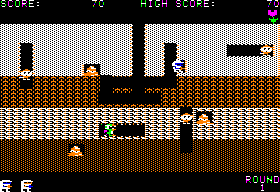
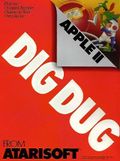
Developed by Atarisoft in 1984. The sky is coloured black instead of blue here, and the dirt is also coloured differently.
Atari 2600[edit]

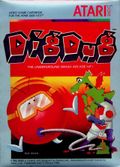
Developed by Atari in 1983 and rereleased in 1987. The rocks are depicted as squares in this conversion of the game.
Atari 5200[edit]
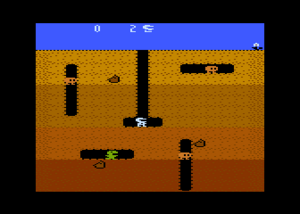
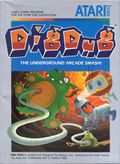
Developed by Atari in 1983. The rocks are correctly depicted in this somewhat more advanced conversion of the game.
Atari 7800[edit]
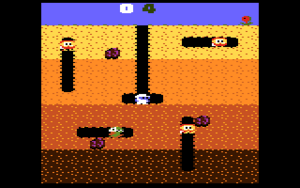

Developed by Atari in 1987. Once again, the rocks are correctly depicted in this more advanced conversion of the game.
Atari 400/800/XL/XE[edit]

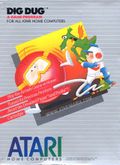
Developed by Atari in 1982. Like the A5200/A7800 versions, the rocks are correctly depicted in this version of the game.
ColecoVision[edit]
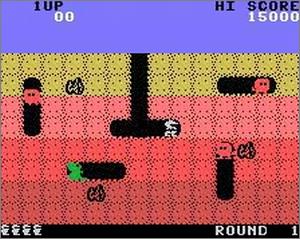
Developed by Atarisoft, but unreleased. This conversion of the game draws the sprites across two frames, which leads to a great deal of flickering.
Commodore 64[edit]
Developed by Atarisoft in 1983. Later rereleased by Thunder Mountain and Datasoft, as you can see in the images below. Allows choosing the starting stage up to 16 based on bonus fruit. Minor difference from the Arcade version is that the enemies do not attempt to dodge falling rocks.
-
screen
-
Atarisoft box
-
Thunder Mountain box
-
Datasoft box
Commodore VIC-20[edit]
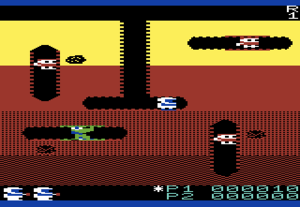
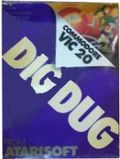
Developed by Atarisoft in 1983. As with the Apple II version, the sky is black instead of blue in this version of the game.
Fujitsu FM-7[edit]
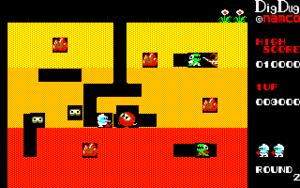
Dig Dug on FM-7 was released by Dempa Shinbunsha.
Fujitsu FM-77[edit]
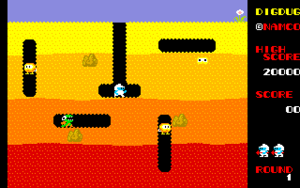
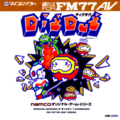
Game Boy[edit]


Developed by Namco and released in the U.S. in 1992. Originally released as part of the Namco Gallery Vol. 2 in Japan.
There is a new version of the game included on this cartridge, entitled New Dig Dug. There are objects that cannot be dug through. You are basically collecting keys to open a door, which will lead to a new round. There is an intermission after you clear each round. You can dig under weights which drop, and also a ball which rolls over everything in its path, and a bomb which kills any enemies in its vicinity. Note: The image shown to the left is of the original conversion and not this new one.
Game Boy Advance[edit]
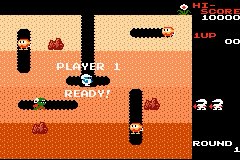
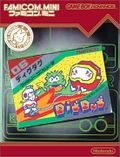
Developed by Namco and published by Nintendo in 2004 as part of the Famicom Mini series. The sky is coloured black.
IBM PC[edit]
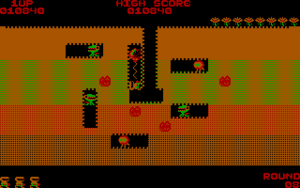
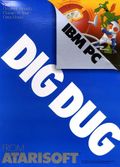
Developed by Atarisoft in 1983. The sky is coloured black instead of blue here, and the dirt is also coloured differently.
Intellivision[edit]
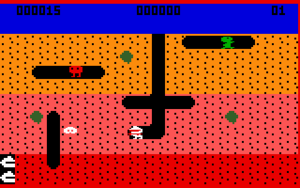

Prototyped by Atarisoft but unreleased. Eventually finished and published by INTV in 1987. The rocks are circular.
MSX[edit]
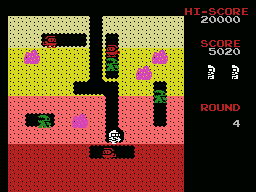
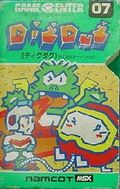
Developed by Namco in 1984. As with the Apple II, VIC-20 and IBM PC versions, the sky is black instead of blue and the rocks are now pink.
Nintendo Famicom[edit]
Developed by Namco in 1985. This version has a high score of 999,990, and stops at Round 99. However, the high score on the title screen will correctly display millions of points. And the flowers are displayed until round 93, but are truncated at 48. Only 12 flowers are ever shown at the top of the screen. You continue to get extra lives, and the game does not end. You can continue playing until you decide to end the game yourself through tiredness. It does not increase in difficulty starting from round 28, where the last four game rounds repeat forever.
-
box
-
screen
-
Maximum score of 999,990
-
Correct score on title screen
TI-99/4A[edit]

Developed by Atarisoft in 1983. As with the A5200 version, the rocks are correctly depicted in this slightly more advanced conversion of the game.






